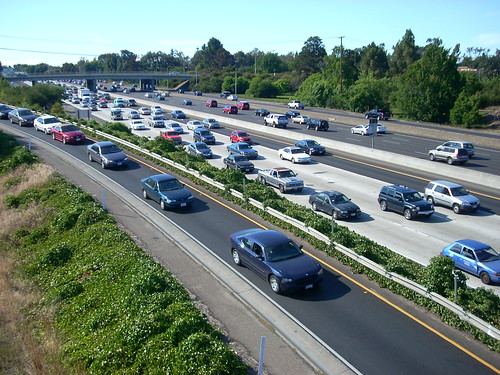- Solving the Emergency Notification Mobility Problem With No Sign-Up Technology 8/21/15
Americans are a society constantly on the move. The fact that more than 30 percent of households now use only mobile phones to make and accept calls today is telling evidence of this. It’s exciting knowing that we’re more mobile than ever before, but when you put our mobility in the context of an emergency situation, the excitement can turn to trepidation.
 Think of a busy highway full of commuters — the I-65 corridor between Chicago and Indianapolis, for instance, or the I-35 corridor connecting some of Texas’ biggest cities. Some listen to their radios. Others are on their cell phones already conducting business calls for the day. Some fiddle with satellite radio or music on their iPods. And still others simply drive in silence, shaking their fists at the other drivers along the congested road.
Think of a busy highway full of commuters — the I-65 corridor between Chicago and Indianapolis, for instance, or the I-35 corridor connecting some of Texas’ biggest cities. Some listen to their radios. Others are on their cell phones already conducting business calls for the day. Some fiddle with satellite radio or music on their iPods. And still others simply drive in silence, shaking their fists at the other drivers along the congested road.
The problem
If there’s bad weather — a thunderstorm, tornado, wildfire or even black ice from a snowstorm — the roads are suddenly even more hazardous than they were with a normal day’s traffic.
If there’s an emergency ahead on the road, how do people find out now? The fact is, they don’t usually find out until they’re in the middle of it — when it’s too late to do anything about it.
Current emergency notification services don’t do anything to serve groups like commuters, who live in one place and spend most of their days either on the road or in an office somewhere.
The same goes for attendees at a conference like South by Southwest, which gathers thousands of people from all over the world. And music fans at a summer festival. And college freshmen exploring their campus for the first time.
The solution
But a new technology offers hope to these so-called transient populations. “No sign-up” technology uses cell tower locations to determine who needs to receive emergency notifications. Cell towers triangulate phone users’ locations and transmit a message to everyone with the appropriate technology in due time.
You won’t need to register for a service to get these notifications; the technology casts a wide net to capture as many people as possible and notify them of the emergency events going on so they can take proper action. So even if you don’t “belong” to an emergency notification service, you’ll still get the message.
FEMA, IPAWS and CMAS
 The Federal Emergency Management Agency made huge strides toward implementing this technology on a massive scale when it introduced its Integrated Public Alert Warning System (IPAWS for short) and the Commercial Mobile Alert System (CMAS for short), which creates a web of local agencies who will use the technology to notify residents in their areas of emergency situations.
The Federal Emergency Management Agency made huge strides toward implementing this technology on a massive scale when it introduced its Integrated Public Alert Warning System (IPAWS for short) and the Commercial Mobile Alert System (CMAS for short), which creates a web of local agencies who will use the technology to notify residents in their areas of emergency situations.
Land lines tend to get jammed during times of crisis, but the no sign-up technology will allow these emergency notifications to be fast-tracked to those who need them most.
We linked to this video in a previous blog post, but it’s worth sharing again to get an idea of the technology and how FEMA is implementing it.
Is your state agency on FEMA’s list? Amatra will provide the platform for actually creating and sending these messages. Visit Amatra’s website to learn more about SmartSource mass notification technology. Amatra can also help you with the required paperwork and answer any questions you have about becoming a public alerting authority to send IPAWS/CMAS messages.
Photo: Richard Masoner, www.cyclelicio.us

